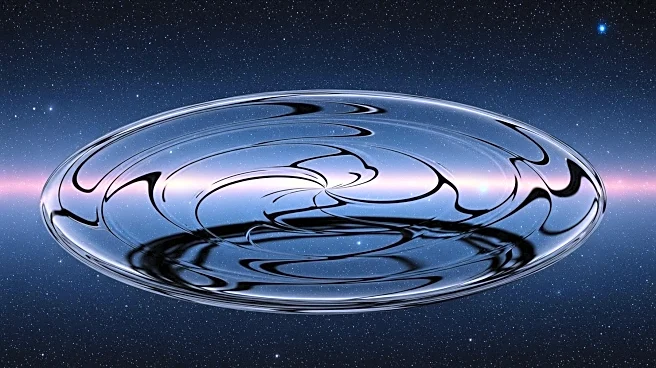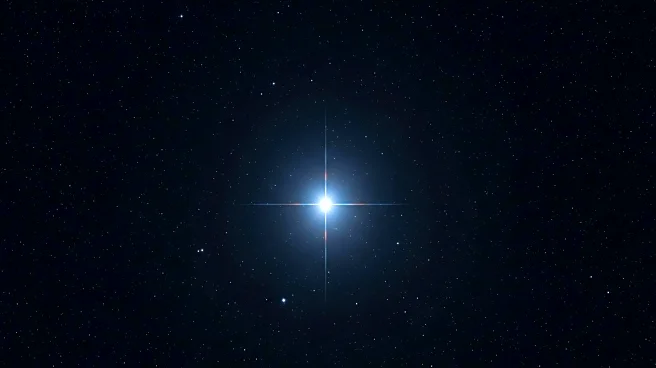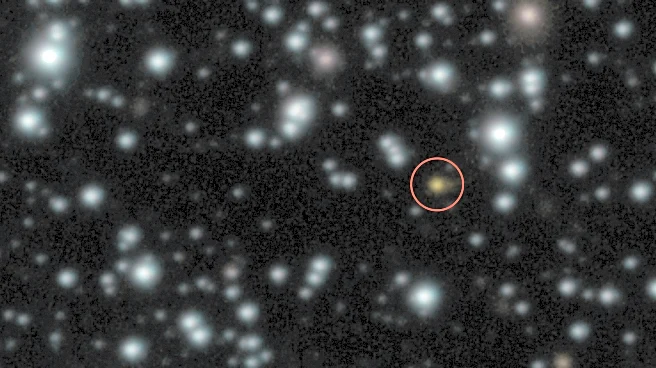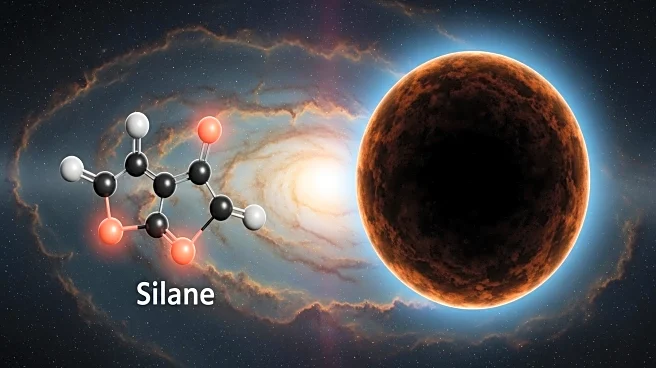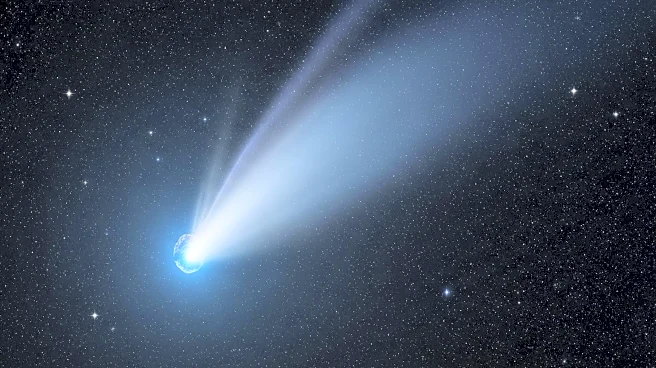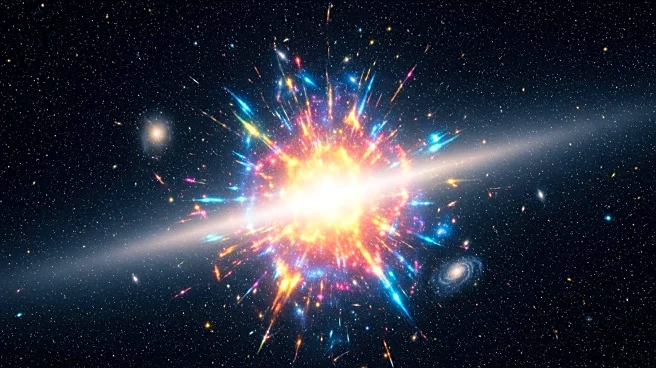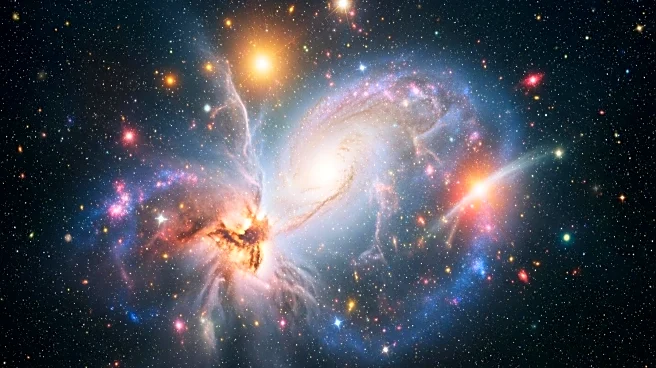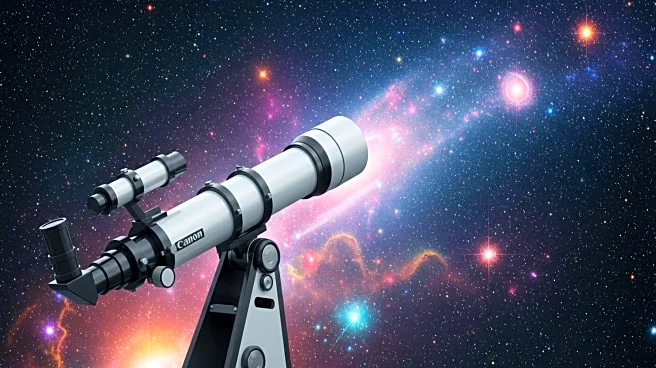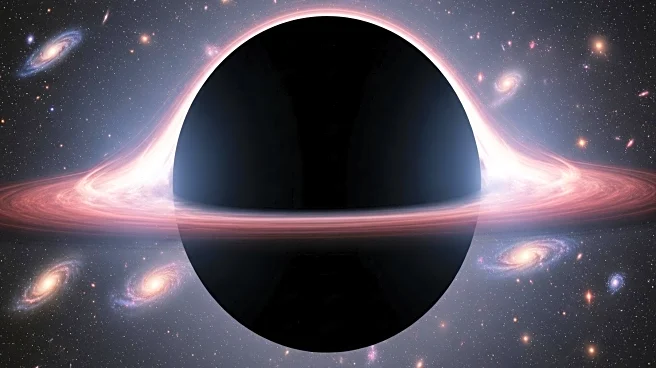What's Happening?
Astronomers have discovered unusual warping in the debris disk surrounding Fomalhaut, one of the brightest stars in the sky. The star, located 25 light-years away, is surrounded by a disk of rock and dust, where exoplanets form. New research suggests the warping is caused by a massive planet orbiting the star. Observations reveal the disk's eccentricity changes with distance from the star, indicating a negative eccentricity gradient. This discovery provides insights into the early evolution of planetary systems and the influence of hidden planets on disk morphology.
Why It's Important?
The findings offer valuable information about planet formation and the dynamics of circumstellar disks. Understanding the interactions between planets and debris disks can shed light on the processes that shape planetary systems. The research highlights the role of hidden planets in altering disk structures, which could have implications for the study of exoplanets and their formation. The ability to resolve disk features at high resolution allows astronomers to explore the complexities of planetary system evolution.
What's Next?
Further observations with ALMA and other telescopes may help confirm the presence of the planet and refine models of disk dynamics. As detection methods improve, astronomers hope to directly observe the planet responsible for the disk's warping. Continued research could lead to a better understanding of how planets influence disk morphology and the conditions necessary for planet formation. The study of Fomalhaut's disk may provide clues about the formation of other planetary systems.
